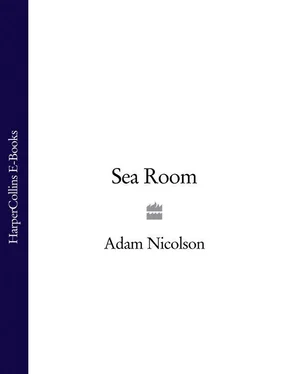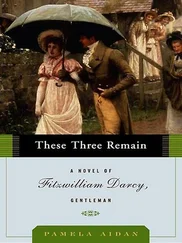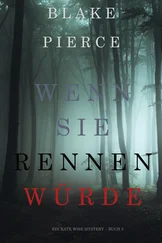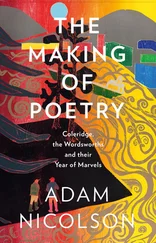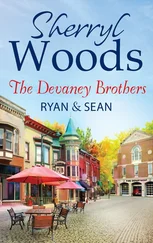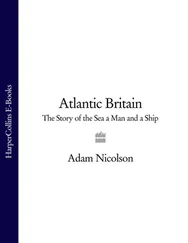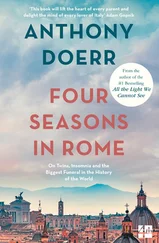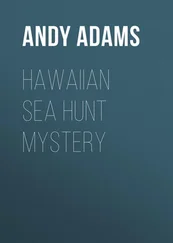
They also enjoyed big pots of boiled puffins for their dinners as a welcome change from the usual fish diet. They told us how they slaughter the puffins. They choose a day when there is a strong breeze blowing against the steep braes where the puffin breed, and the lads then lie on their backs on these nearly perpendicular slopes holding the butt-ends of their fishing rods. These stiff rods would be about nine or ten feet long [and almost certainly at this time made of bamboo]. Holding them with both hands, they whack at the puffins as they fly past them quite low in their tens of thousands, and whether the puffin is killed outright or only stunned he rolls down the hill and tumbles on the shore or into the sea, where the rest of the crew are kept busily employed, gathering them into the boat.
It is possible to reconstruct something of the conditions in May 1881. The steep braes to which Mackenzie refers are on the north face of Garbh Eilean, a big, green, grassy bank, the grass itself thickly enriched by the generations of puffin droppings that have fallen on it. You cannot spend five minutes there without being spattered yourself. The puffin bank faces the small rocky inlet called simply Bagh, the Bay, and beyond it the Stream of the Blue Men and the square outline of Kebock Head in Lewis. A strong breeze blowing on to them, creating the conditions the fowlers preferred, would have been a northerly. That would also be the wind that would carry the boys easily down southwards from Lemreway to the Shiants. With an ebb tide under them, it would scarcely take more than an hour to run down the six miles or so.
You can imagine the dream of the day. The colours which drain out of the Hebrides in the winter, leaving the black rock and grey turf as a monochrome ghost of the summer life, have now begun to return. The lichen glows yellow on the rocks. The off-lying skerries are pink with the thrift in flower. Fat red and white campions make cushions in the nicks of the cliffs. The sea is silk, patterned in the Stream of the Blue Men with the twisted curls and table-top bubbles of the upwelling sea.
It would have been the same in the 1850s and the 1880s as it is today: that glowing light, the notched outline of the mainland to the east hazed by the rising sun, the hills of Skye still wrapped in the morning clouds, the long broken back of the Hebrides running down to south Harris, the Uists and to Barra, and the Shiants hanging in the middle distance, a secret world, asking to be visited.
The Lemreway boys in 1881 planned to stay overnight on the islands. There was a shepherd and his family living there at the time. Donald Campbell, better known as Domhnall nan Eilean, or Donald of the Islands, had come over from Molinginish, a small township on the coast of Harris near the mouth of Loch Seaforth, twenty years before. He had his wife and children with him and together they lived in a good house of two rooms on the island, which had previously been called Eilean na Cille, the Island of the Church, but which they called Eilean an Tighe, House Island, the name it has today.
Summer was the time for visiting. Winters for the Campbells would have been lonely, but come April and May, with the stilling of the sea, the network of connections that have always bound the summer Shiants to the neighbouring islands, would re-emerge. Campbell’s employer, the farmer and Stornoway merchant, Roderick Martin of Orinsay, would bring out to him the meal and other supplies he needed. The socks which the Campbell girls had knitted over the winter would be sold or even given to anyone visiting. Gentlemen in yachts might arrive to investigate the geology or the birds. There were plenty of diversions.
The fowlers, as a courtesy as much as anything else, would have taken their boat to the anchorage just in front of the shepherd’s house on the west side of Eilean an Tighe. Courtesy and hospitality remain the norm here. Even nowadays, when a stranger arrives and the shepherds happen to be there, the greetings are warm, welcoming and generous, far more than among English people in the same situation. ‘Hallo, hallo, hallo, hallo, hallo, hallo,’ I heard Donald ‘Nona’ Smith, one of the modern shepherds, say to a man landing on the beach here one day, a rising chorus of delighted welcome.
‘Do you know him well?’ I asked Nona later.
‘No, I’ve never met him before,’ he said. ‘But you’ve got to be diplomatic.’ There is no sense of anyone’s isolation being invaded. Sociability has always included the Shiants. But it can only be presumed on to a certain extent. The Lemreway boys brought their own provisions with them, some oatmeal and perhaps some of the cod or ling they might have caught on the way down.
There is a patch of sandy grey mud on the sea-bed a hundred yards or so offshore in front of the house, and in a northerly it is protected from the worst of the sea. A cairn high on the hill may well be a mark of this anchorage. Its stones are hairy with a long-bearded lichen, and because lichen takes a long time to grow, that alone is a mark of its age. Although people are always ready to attribute seamarks in the Hebrides to the Norse, there is no real way of dating them. The boys would have dropped anchor, unstepped the mast, furled the sail and would have come ashore in their dinghy to the beach next to the Campbells’ house.
The time of birds is the time of abundance, the season of summer-time adventure but the expedition to the Shiants of the Lemreway boys ended in disaster. Their boat, ‘an Orkney-type boat, a double ender, a stout boat’, Dan Macleod calls it, eighteen feet in the keel, a little longer than Freyja , had been safe enough overnight, protected from the northerlies by the bulk of Garbh Eilean. It can be quite still in there even on a wild day. While you hear the groaning of the breakers on the other side a mile away, plunging their long tongues into the caves at the cliff foot and exploding inside them – a heavy, quarryman’s boom reverberating through the island, at your feet, in the lee of the vast, whale body of Garbh Eilean, the water laps on the rocks and the eiders paddle from one inlet to another as if asking for bread in St James’s Park.
The boys spent the night with the Campbells and were due to return home the following day – it was a Wednesday – but they never arrived. That evening, as Dan Macleod has written,
their families, neighbours and friends gathered around scattered vantage points anxiously scanning the surface of the water to see if they could detect any sign of their loved ones’ boat coming home. Alas, there was none and the young men’s fathers resolved to sail out to the Shiants at first light the following day.
The party of fathers arrived at the shepherd’s cottage, and Domhnall nan Eilean told them that the boys had stayed with him on the Tuesday night but when the wind changed direction on Wednesday morning, they had decided to move the boat to a more sheltered spot.
The wind had gone round to the south-west and stiffened. In that wind the anchorage off the house was the most exposed place on the Shiants and there was no way they could leave it there. In a southwesterly, the only usable place is in the shadow of the giant boulder screes that run along the eastern side of Garbh Eilean. Looking down from the cliff-top there on a sunny day, at low tide, with the light driving down through the twenty feet or so of water, in which the puffins and the other auks dive and dart for food, you can see the pale turquoise patch of sand into which boats can drop their anchor. All around are boulders, in which an anchor would get caught and could never be retrieved; or cobbles, through which the anchor would slither in a wind. That sandy patch is well tucked in, sheltered from the west by the block of land above it, and sheltered from the north by a narrow arm of the island which stretches out eastwards towards Eilean Mhuire.
Читать дальше
